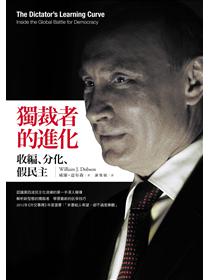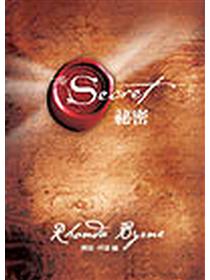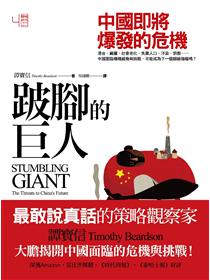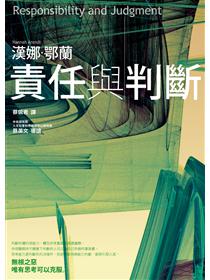章節試閱
第四章 超優勢競爭
╱達特茅斯塔克商學院策略管理學教授 理察‧達凡尼
波特的策略定位與哈默爾及普哈拉的資源基礎理論,為策略世界帶來不同省思。但這兩派理論儘管論點不同,卻都有一項直到1990年代、大體上沒有遭到質疑的共同假定:策略管理的最後目標,是取得持續競爭優勢,也因此,持續競爭優勢不僅是人人喜愛的好東西,也是可以實現的。
但到1990年代中期,有人開始質疑這項理念。競爭優勢不都是短暫的嗎?持續競爭優勢只是策略人憑空想像、創造出的一種管理煉金術吧?達特茅斯塔克商學院的達凡尼正是這麼想的。他認為,商界已經進入一個他所謂「超優勢競爭」的時代。達凡尼說,隨著競爭不斷加速與加劇,世上已經沒有持續競爭優勢這回事。他認為,今日的企業必須在短暫的基礎上競爭,必須不斷改變競爭優勢,想辦法讓對手動盪不安。
達凡尼開始向當時的正統策略思考提出挑戰,而且樂之不疲,他喜歡扮演這種角色。有人稱他為「企業策略的亨利‧季辛吉」(Henry Kissinger(註) of corporate strategy),他欣然接受這個稱呼:「真是太好了。我愛季辛吉,也曾花許多時間讀他的書。」
註:美國政治學者,曾任國務卿,得過諾貝爾和平獎,是20世紀著名的權謀大師。
當時,像IBM與通用汽車這類美國大企業正逢低谷。但根據傳統策略理論,憑藉巨大的規模經濟、雄厚的資源、強大的定價力、技巧純熟的供應鏈以及走在科技尖端的研發實力,這些公司應該可以輕鬆在市場上建立進入障礙,取得長期競爭優勢。這套邏輯很耳熟吧?
世界變了。多年來為人奉為圭臬的策略信條已經不再管用。在這個新世界中,改變的速度有增無已,新科技以令人眼花撩亂的速度不斷出現,競爭對手在全球各地崛起,既有市場垮了,新市場在讓人意想不到的地方突然冒了出來。
根據當時既有的概念,公司應該集中力量,採取創造優勢的策略。但達凡尼認為,破壞競爭對手的優勢也同樣重要。許多採取5年策略的公司發現,等到資產到位、策略展開的時候,市場環境已經改變,世界已經向前,把他們拋在後面。
根據達凡尼的世界觀,企業的生存之道,與一連串「充滿動能的策略互動」息息相關。企業在採取策略行動之後,會遭到競爭對手反制,之後,企業會改採另一行動,謀取不同優勢,但又會遭到再次反制,如此循環不息。這就是「超優勢競爭」世界,在這個世界,優勢迅速創造,之後消逝。
達凡尼在《超優勢競爭:新時代的動態競爭理論與應用》(Hypercompetition: Managing the Dynamics of Strategic Maneuvering)中指出:「競爭對手一旦能複製或超越你的優勢,則優勢不再存在。保護優勢已經愈來愈難,一旦遭到複製或克服,優勢不再成為優勢。它現在只是一種做生意的成本。到最後,創新業者只能在競爭對手發動反制行動前的一段有限期間,利用它的優勢,一旦反制發動,這項原始優勢也開始消逝,公司需要另創新優勢才行。」
達凡尼說,在超優勢競爭世界,組織的策略目標是「創造一連串暫時的優勢以掌控主導權」。組織以跳蛙式做法,不斷從一個暫時性優勢躍向另一個暫時性優勢,不斷創造新優勢,並削弱競爭對手保有的優勢。
在超優勢競爭環境中,充滿動能的策略互動在4個競爭場上展開:成本與品質、時機與知識競爭、據點的創造與破壞,以及以雄厚資本為根基建立資本更雄厚之聯盟的競爭。
達凡尼同時提出一套在超優勢競爭世界運作的原則。為在超優勢競爭世界中勝出,他改寫管理顧問業者麥肯錫所創的一項著名架構。麥肯錫原創的「7個S」架構包括7項特定內在因素,這7項因素必須調配在一起,才能創造競爭優勢:結構(structure)、策略(strategy)、系統(system)、風格(style)、技巧(skill)、人員(staff)與最高目標(superordinate goals)。但達凡尼說,所謂調配談的是維持一種特定狀態,而不是一連串優勢的演進。這是一種沒有彈性的做法,不適合超優勢競爭。
達凡尼於是提出他自己的7S架構。他認為,企業必須具備3樣東西才能顛覆市場:能夠撼動與顛覆市場的遠見,打破現狀所需的某些能力,以及準備在超優勢競爭情勢與顛覆過程中運用的正確戰術。
要在這些領域勝出,企業應該運用達凡尼新7S架構的以下7項要件:第一,利害關係人聚焦(stakeholder focus);第二,策略預估(strategic soothsaying,屬於遠見),把焦點擺在顧客與員工這類關鍵性利害關係人身上,預測他們今後會有什麼需求。第三與第四是速度(speed)與驚奇(surprise)(屬於能力),以迅速的行動搶占機會優勢,以始料未及的方式擊潰競爭對手的反撲。達凡尼指出,IBM一開始似乎無敵,但戴爾(Dell)卻以直銷與配銷模式異軍突起,讓IBM措手不及。
之後,還有3項與戰術有關的要件。第五項要件是改變規則(shifting the rule),公司要採取一些行動改變市場動能,以及市場運作的方式。第六是訊號(signal),這是公司用策略意圖宣示主控市場的所在。第七是同步或相繼進擊(simultaneous or sequential thrust),這是一種多波段攻擊,目的在運用一連串產品上市等手段,矇騙或困擾對手。
超級對話
與達凡尼面對面會談,會發現他有美國小說家達蒙‧魯農(Damon Runyan)筆下人物那種風采:意見精闢、切中要害,善於應付大觀念。
與我們談一談《超優勢競爭》這本書的創作。
寫這本書的靈感,來自一件很奇特的事。有一次我在麻省鱈魚角(Cape Cod)度假,正好碰上鮑伯颶風(Hurricane Bob)來襲,停電停了約4天。電力恢復的時候,美國有線電視新聞網(CNN)正在報導蘇聯的崩潰。我沒想到這樣的大事竟能在短短幾天內出現。蘇聯解體是我們這一代最重要的經濟與政治變化之一。
我沉思了一陣,對自己說,我教了那麼多學生,談的都是長期規劃與前後一貫的策略。但像這樣驚天動地的事能在一夜之間出現的世界,又怎能真正做到什麼長期規劃?甚至就連擁有一切資源的中央情報局(Central Intelligence Agency)都不知道事情即將發生,你又怎能訂定什麼一貫策略?我心想,不能再自欺欺人了。於是我決定坐下來寫一本書,拋開傳統策略觀,討論在一個無法預測的世界中,沒有所謂持續優勢。
Tell us about the genesis of Hypercompetition.
The book came about because of a very strange event. I went to Cape Cod in Massachusetts for a vacation, and a hurricane came along called Hurricane Bob. While I was there it knocked out all the electricity for about four days. When the electricity came back on, CNN was running a program on the fall of the Soviet Union. I had no idea that something like that could happen in a few days. It was one of the most important
economic and political changes of our generation.
So I stepped back and said to myself, I’m teaching all of these students about long-term plans and consistent strategies. How do you really do that in a world where significant earth-shattering changes appear overnight? How do you do that when even if you had all the resources of the Central Intelligence Agency, you still couldn’t figure out that it was going to happen? I thought to myself, I must be a fraud, and decided to sit down and write a book that was about unsustainable advantages in an unpredictable world rather than the traditional view of strategy.
你說的是我們現在生活的這個世界嗎?
是的,沒錯。只不過我認為自1994年以來,這個世界變得更瘋狂了;今天的世界稱得上是吃了類固醇的超優勢競爭。今天的世界比我第一次有這個構想的時候,更「超優勢競爭化」了。超優勢競爭的核心理念是,由於全球化與科技突破,優勢愈來愈無法持續。由於中國與印度崛起,以及無數其他國家進入壁壘的瓦解,全球化正在加速。當然,科技腳步也沒有緩下來,而且還在不斷擴展。一度為人視為革命性科技的網際網路,現在已經成為世界各地的生活常態,它仍然在許多許多市場引起激進效應。只不過它已經成為每一個市場無所不在的科技,我們不再談它罷了。
So you described the world we’re now in?
Yes, that’s right. Except I think the world has become even crazier since 1994; it’s really hypercompetition on steroids today. It’s even more relevant today than it was when I first bought it. The core idea was that advantages were becoming unsustainable because of globalization and technological disruption. Globalization is accelerating because of the rise of China and India and the falling entry barriers around numerous other countries. Of course, technology hasn’t slowed down at all; it’s expanding. The Internet, which was once considered revolutionary, is now par for the course everywhere, still having the
same radicalization effect on many, many markets. Just we don’t talk about it anymore, because it’s so endemic in every marketplace.
在這樣一個秩序蕩然、混亂不堪的世界,認為我們可以替未來進行規劃的策略思考,難道不是一種一廂情願嗎?
沒錯,這也正是超優勢競爭的全部要點。我的論點是,公司需要長期策略,但它講究的應該是定序(sequencing),你要取得許多短期優勢,然後像梅里韋瑟‧路易斯(Meriwether Lewis)與威廉‧克拉克(William Clark)發現進入太平洋的西北航道一樣,不斷摸索前進。你從一山前往另一山時,駐足觀望,只知道一個大方向。20年前,當一切還很穩定的時候,你可以事先從起點一路規劃到終點,但現在辦不到了。你不可能知道這個世界最後會變成什麼樣子,你必須習於這種不確定,你必須容忍這樣的世界。但同時你得有信心及勇氣,從一山前往另一山,而且不讓自己掉入知識陷阱,以為只要用1年前或5年前那套辦法就能成事,因為1年前或5年前的辦法如今已於事無補。
In such a disorderly, chaotic world, isn’t strategy wishful thinking to think we can plan the future in any detail?
Yes, that’s the whole point of hypercompetition. What I argued was that there was a need for longterm strategies, strategies about sequencing, lots of short-term advantages and exploring your way forward, the way Lewis and Clark found the Northwest Passage to the Pacific. You only know what direction you’re headed in when you go from hilltop to hilltop looking around for the next hilltop. You can’t chart the course all the way from beginning to end the way you might have been able to 20 years ago when things were stable. You can’t know where you’re going to end up in this kind of world, and you have to be used to the uncertainty. You have to have tolerance for that kind of a world but have the faith and the courage to be able to move forward from hilltop to hilltop and not get caught in the intellectual trap of thinking that you have to continue to leverage the same confidence that you had one year ago or five years ago, because it won’t get you to where you’re going.
範圍與革命
熟讀軍事策略與《孫子兵法》的達凡尼,在勢力範圍(sphere of influence,指某一國家對某地區有的控制及影響力)與反制革命的行動方面下過一番工夫。他將這些反制行動轉換為5種策略反應,每一種反應呼應一個不同的革命階段。達凡尼說,即早偵知一項革命的公司,可以運用「扼制」(containment)做法,建立一些障礙,在革命養成氣候、坐大以前先將它扼殺,或至少爭取一些時間部署第二項策略。第二步是想辦法「塑造」(shape)革命,使這種新技術或新商業模式與既有技術互補,而不是取代既有技術。如果這一招也失敗,公司必須考慮,它能不能進行調適,「吸收」(absorb)這種新技術。
達凡尼指出,但有些革命成形的速度太快,根本來不及扼制、塑造或吸收。面對這類狀況,公司需要採取更有侵略性的做法。選項之一是,直接讓挑戰的對手沒有用武之地,例如公司可以暫時免費提供具競爭力的好處。市場領導業者還可以使用「廢除」(annulment)策略,設法繞過革命。
達凡尼用了一項一般運用在國家上的地緣政治概念,說明他的勢力範圍概念。達凡尼認為,勢力範圍概念可以為企業面對的一項重大挑戰提供部分解答。他問道:「談到企業的業務組合與地緣市場定位,企業想突顯或保護它在產業或一群產業中的有利地位時,可以運用什麼整體邏輯?」
勢力範圍是「成功企業想建立與維護秩序、想創建獲利產業的最佳之道」。這類範圍包含幾個層次,每一層各有它本身的策略意圖。範圍核心是能為公司勢力與獲利打下基礎的產品、服務或地緣市場。然而,把核心競爭力聚焦在這個區塊尚不足以建立勢力範圍;公司還必須擊退可能來犯的對手,在核心市場建立主控與營造價值的領導地位,以維護控制權。
走出核心,勢力範圍的下一個層次是重大利益(vital interest)。一旦在這些市場失靈,衝擊效應(knock-on effect)會威脅到企業在核心市場的基礎。重大利益層的外圍是緩衝區(buffer zone),緩衝區包括一些可以放棄的市場,也因此能為企業提供一些對抗外敵入侵的保護。
此外,在創建勢力範圍時,還要考慮兩個區,一是關鍵區(pivotal zone),一是前進陣地(forward position)。關鍵區是有潛力在未來扭轉競爭均勢的地區;企業可以在這些市場保有一種預先警戒的注意力。前進陣地是接近主要對手核心的前線產品或服務。不過,當競爭對手也在其他主要對手附近建立前進陣地,就會造成一種相互毀滅的情勢,即所謂墨西哥僵局(Mexican standoff,源自一個據說發生在墨西哥的故事,三造均用槍相互指著,結果沒有人敢先動手)。結果是,由於擔心遭到類似攻擊,沒有一家公司膽敢冒險逼近對手核心。
達凡尼說,勢力範圍一旦確立,是「很有威力的武器,能讓企業投射它的勢力,在它的產業主控更大的競爭空間。精明的經理人還能用這種範圍讓範圍以外的業者知所警惕,不敢稍越雷池一步」。
大宗商品化的威脅
到2000年代末期,達凡尼的眼光已經轉移到產品與服務的大宗商品化。這是公司面對的一個較新、但愈來愈普遍的威脅。造成大宗商品化的原因可能是廉價競爭對手,可能是技術創新,也可能是替代品的出現,但無論基於什麼原因,大宗商品化以及墜入達凡尼所謂的「大宗商品化困境」,都「可能毀滅整個市場,顛覆整個產業,迫使原本成功的企業關門大吉」。
你曾說大宗商品化是超優勢競爭最新的表象。能加以說明嗎?
大宗商品化是最惡劣的一種超優勢競爭形式。一顆鑽石經風、雨與各式各樣折磨不斷腐蝕、磨損,最後失去一切光澤,成為一塊粗糙的石頭:這種過程就是大宗商品化。
產品的情況也一樣。經大宗商品化的產品基本上也是不斷喪失差異化,直到沒有特色為止。大多數人認為,解決這個問題的辦法就是不斷進行差異化,在石頭上另刻新的刻面。這辦法的問題是,每個人都可以採取完全一樣的行動。今天的仿冒行動之快,已經快到僅僅為了能留在原地,你必須愈跑愈快。像《愛麗絲夢遊仙境》(Alice in Wonderland)中那位紅心皇后(Red Queen)一樣,跑得飛快卻哪裡也去不成。
You’ve said that commoditization is the latest manifestation of hypercompetition. Can you explain that?
Commoditization is one of the most virulent forms of hypercompetition. Commoditization is the process of a diamond gradually finding its facets worn off by wind, water, and handling until it becomes simply a rough stone. And it’s similar with products. Products that commoditize basically go from being differentiated to having lost their uniqueness. Most people think the solution is to create a continuous differentiation
process to recarve new facets onto the stone. The trouble is that everyone can do the exact same thing. Imitation now is so quick that you end up running faster and faster to stay in the same place. Like the Red Queen in Alice in Wonderland, you run so fast that you get nowhere at all.
你說第一個大宗商品化困境是向下沉淪(deterioration)。這是怎麼回事,你能舉個例嗎?
事實上,並非所有大宗商品化都以同樣方式出現。大家都稱它是大宗商品化,但它事實上有3種起頭。其中一種起頭就是向下沉淪困境。採用這種大宗商品化手段的,一般是廉價折扣商。這些專賣廉價劣質產品的商人以極低價提供產品,消費者購買只因為它們便宜。之後,其他公司不得不應付這折扣商的市場力,於是開始跌進低價、劣質的陷阱,徹底毀掉它們本身的優勢。或者,其他公司也可以採取撤出廉價市場的對策,於是,成為卡在小型利基市場的業者。
觀察不同的產業與公司,例如零售業的沃爾瑪(Walmart)與民航業的瑞安航空(Ryanair)或西南航空(Southwest)。基本上,面對大宗商品化困境可以採取3種反應:將對手的競爭優勢轉化成你的優勢、避開或摧毀那個陷阱。我比較喜歡的反應是,不向廉價折扣商的市場力屈服,想辦法摧毀它。我的研究中提出幾項不同的策略,可以摧毀廉價折扣商的策略。其中一項是想辦法讓對手的市場力老舊過時。另一項是運用另一種大宗商品化困境,即全面擴張型困境(proliferation),從四面八方對廉價折扣商進行騷擾,將它從根本上趕出這個市場。
The first commodity trap you describe is deterioration. How does that work, and can you give an example?
It turns out that not all commoditization takes place in the same way. People have one word for it, but it actually has three heads. One of the heads is deterioration. That method of commoditization is typically wrought by a low-end discounter. The low-end discounter provides such low prices that people buy only on price. The other firms then have to deal with the discounter’s market power, and so they start to
sink into this hole of low prices and low quality, effectively destroying their own advantages. Alternatively, they move out to become stuck in tiny little niches.
Looking at different industries and companies, such as Walmart in retailing and Ryanair or Southwest in the airline industry, there have been basically three responses: take advantage, escape, or undermine that trap. My favorite response is, rather than succumbing to the market power of that low-end discounter, you seek to undermine it. Several different strategies came to light in my research about how to undermine the strategy of a low-end discounter. One was to find a way to make its power obsolete. Another was to apply another of the commodity traps—proliferation—to the low-end discounter to basically take it out of the market by nibbling at it from multiple directions.
你談到向下沉淪,談到全面擴張,大宗商品化最後一個起頭是向上提升型困境(escalation)?
是的,沒錯。這是最難纏的一種,因為它已經養成氣候了。在心中想像一幅價位—品質圖,你會發現業者都向低價位與高品質一角移動。這是一種講究勝人一籌的遊戲。只要有任何一個業者提高品質、降低價格,其他業者就會紛紛跟進。它開始變得像古巴飛彈危機(1962年冷戰期間,蘇聯在美國後院古巴部署導彈,美國為迫使蘇聯撤離這些導彈,對古巴實施海軍封鎖,最後蘇聯退讓)一樣,不過這是一場看誰先到達底線、終於不支的武器競賽。加入這項競賽的業者遲早必須不惜血本、放棄既有產品。
所以說,問題在於你能不能控制大宗商品化坐大的走勢?潛在的解決辦法是把走勢導向另一個方向,緩和或凍結走勢,或操控走勢,使你超越其他每一個業者,首先達到大宗商品化的臨界點。但就在你把其他業者都帶到這個大宗商品化懸崖的同時,你跳開懸崖,改變地圖空間,不再玩這場同品質規模的遊戲,而讓其他業者都躍入大宗商品化的地獄。
So there’s deterioration, there’s proliferation, and the final head on the monster is escalation?
Yes, that’s right. And this is the toughest one to beat, because momentum builds up. Imagine a pricequality map, and you find players moving toward the corner of low price and high quality. It’s a game of
one-upmanship. Each player raises her quality, lowers her price, and the next one has to match. It starts to become like the Cuban missile crisis, but it’s an arms race to the bottom because the first one to the bottom blows himself up. You end up giving away your product for almost nothing.
So the question is, Can you control the momentum toward that? The potential solutions are to reverse the momentum in one direction, to slow or freeze the momentum, or to harness the momentum so that you move faster than everybody else toward the point of commodity. But then, just as you bring everybody to the commodity cliff, you jump and
change the dimensions of the map so that you’re no longer playing on the same quality scale and the rest of your industry jumps into commodity hell.
金融危機帶來大宗商品化另一要素,也為我們這場比喻遊戲添了又一個詞彙,就是蒸發(evaporation),你能為我們談談嗎?
是的,這是在這一波不景氣中出現的一個特定問題。需求蒸發的道理很簡單,就是民眾不再購買了。民眾大幅減少購買,迫使企業必須降價才賣得出東西。結果是企業產能出現閒置,削價競爭愈來愈激烈。所以說,蒸發事實上並不是傳統意義的大宗商品化困境,市場並沒有磨損鑽石的刻面。蒸發其實是不景氣時期出現的一種暫時性問題。解決辦法是,你認清自己處在一場巨型風暴中,於是架上壓條封艙。你要學習怎麼保持彈性,準備應變。最後,你還必須預做準備,一旦風暴漸去,才能夠重新站穩腳步、全速前前。
To continue mixing our metaphors, the financial crisis revealed another element of commoditization, which is evaporation. Can you tell us more about that?
Yes, that’s a particular problem showing up during the recession. Demand evaporation is simply that people stop buying. They buy so much less than they did before that all companies have to lower their prices to sell anything at all. There’s excess capacity, and a lot of price competition develops as a result. So evaporation isn’t really a commodity trap in the traditional sense. It’s not the market whittling down the facets of the diamond; it’s really a temporary problem of recessionary periods. And here the solution is to recognize that you’re in a tremendous storm and batten down the hatches. You also learn how to float with the changes so that you can be very flexible as things unfold. And then finally you become able to preposition yourself for landing on your feet when the storm subsides.
在這類動盪不安的時代,策略仍然重要嗎?它仍然能帶來新氣象嗎?
是的,策略仍然重要,至少如果你做對了,它仍然重要。而且我認為,處在今天的世界,策略比過去更加重要了。今天的策略重點在於為未來預做準備,在於思考該怎麼充實你的產業,一旦完成這些工作,產業才能在沒有閒置產能的情況下運作。你還要想辦法像金融服務業一樣與政府合作。金融服務業還沒有完全了解狀況,不過政府會從個別企業手中接管更多掌控權,但這是一個大好商機,而不是威脅。華爾街那些業者視其為一項威脅,但如果能建立規範,讓企業遵照各種規則行事,就能避免又一場信用崩盤。此外,你還可以製造極大的進入障礙,建一個除你之外只有少數業者依然健在的世界。在今天的許多產業,這種「碩果僅存」的策略很管用。
In these troubled times, is strategy still important? Does it still make a difference?
Yes, at least if you do it right. Even more so today, I think. A lot of it is about prepositioning for the future, looking at how you can consolidate the industry, so that when you’re done, the industry will be able to function without excess capacity, and finding methods where you cooperate with the government, as in financial services. The financial services industry doesn’t quite get it, but the government is going to take over a lot more control from individual corporations, and this is a great opportunity, not a threat. On Wall Street they see it as a threat, but if you can put in regulations, cooperate to put in all kinds of rules to prevent another credit crunch, you can also create tremendous barriers to entry and create a world in which you’re one of the last guys standing. The last man standing strategy plays out in a lot of industries
today.
策略人應該怎麼做,才能與現實世界保持良好接觸?
基本上我是一個理念的進口人與出口人。我觀察全球走勢,觀察應我之邀、來到我班上發表談話的執行長;2、3年來,已有約60位《財星》500大(Fortune 500)排行榜上的企業執行長應邀來我班上演講。我把這些走勢輸入各產業,運用在新情勢上。
我走訪許多公司,這些公司說,我們辦不到,那根本不可能辦到。然後我會指出,那為什麼其他地方、其他產業能辦到?我就這樣打破許多業者的成見。
How does a strategist keep in touch with the realworld?
Basically I’m an importer and exporter of ideas. I suck up the general trends I see all over the globe and what I see from the CEOs I invite to my classes; over the last couple of years I’ve had about 60 Fortune 500
CEOs come to my classes. Then I look for the trends and import them across industry boundaries and to new situations.
I go to many companies where they say, We can’t do that; that’s not possible. And I’m able to point out, Well, why is it possible in these other locations or in these other industries? So I get to break the frame of what a lot of people are thinking.
第四章 超優勢競爭
╱達特茅斯塔克商學院策略管理學教授 理察‧達凡尼
波特的策略定位與哈默爾及普哈拉的資源基礎理論,為策略世界帶來不同省思。但這兩派理論儘管論點不同,卻都有一項直到1990年代、大體上沒有遭到質疑的共同假定:策略管理的最後目標,是取得持續競爭優勢,也因此,持續競爭優勢不僅是人人喜愛的好東西,也是可以實現的。
但到1990年代中期,有人開始質疑這項理念。競爭優勢不都是短暫的嗎?持續競爭優勢只是策略人憑空想像、創造出的一種管理煉金術吧?達特茅斯塔克商學院的達凡尼正是這麼想的。他...
目錄
前 言 策略,領導組織脫困的核心要件
第1章 策略學的由來
第2章 了解競爭優勢
第3章 直取核心
第4章 超優勢競爭
第5章 探討藍海
第6章 策略行動
第7章 策略與社會相會
第8章 當策略接觸現實世界
前 言 策略,領導組織脫困的核心要件
第1章 策略學的由來
第2章 了解競爭優勢
第3章 直取核心
第4章 超優勢競爭
第5章 探討藍海
第6章 策略行動
第7章 策略與社會相會
第8章 當策略接觸現實世界
 3收藏
3收藏

 2二手徵求有驚喜
2二手徵求有驚喜





 3收藏
3收藏

 2二手徵求有驚喜
2二手徵求有驚喜




































